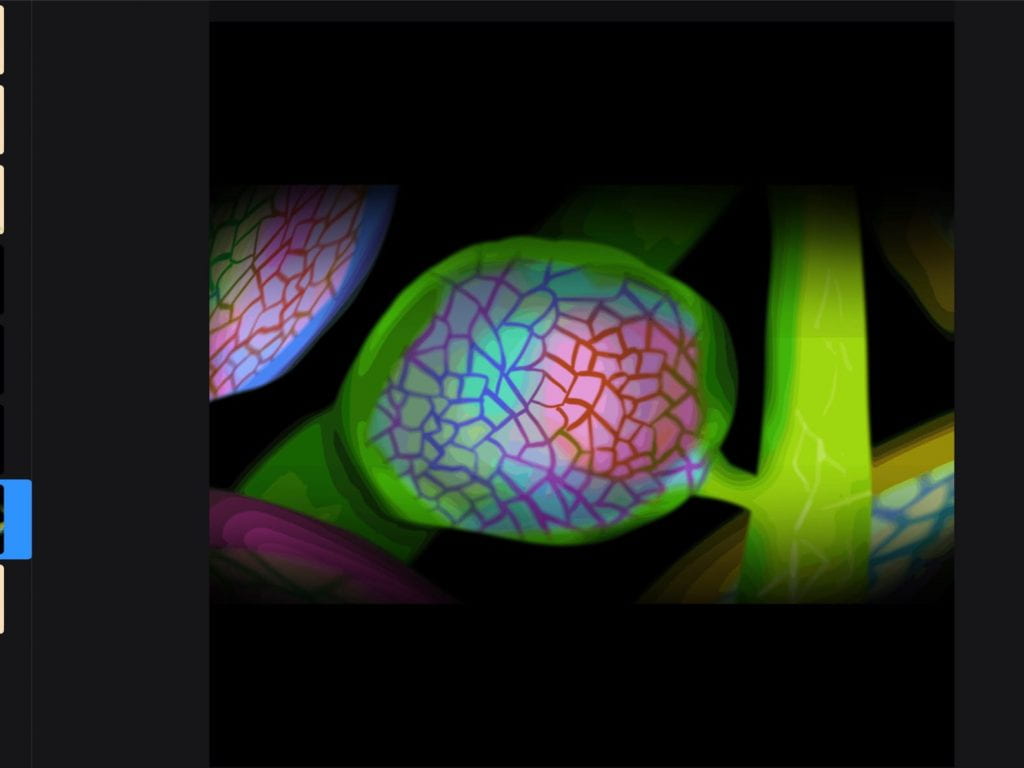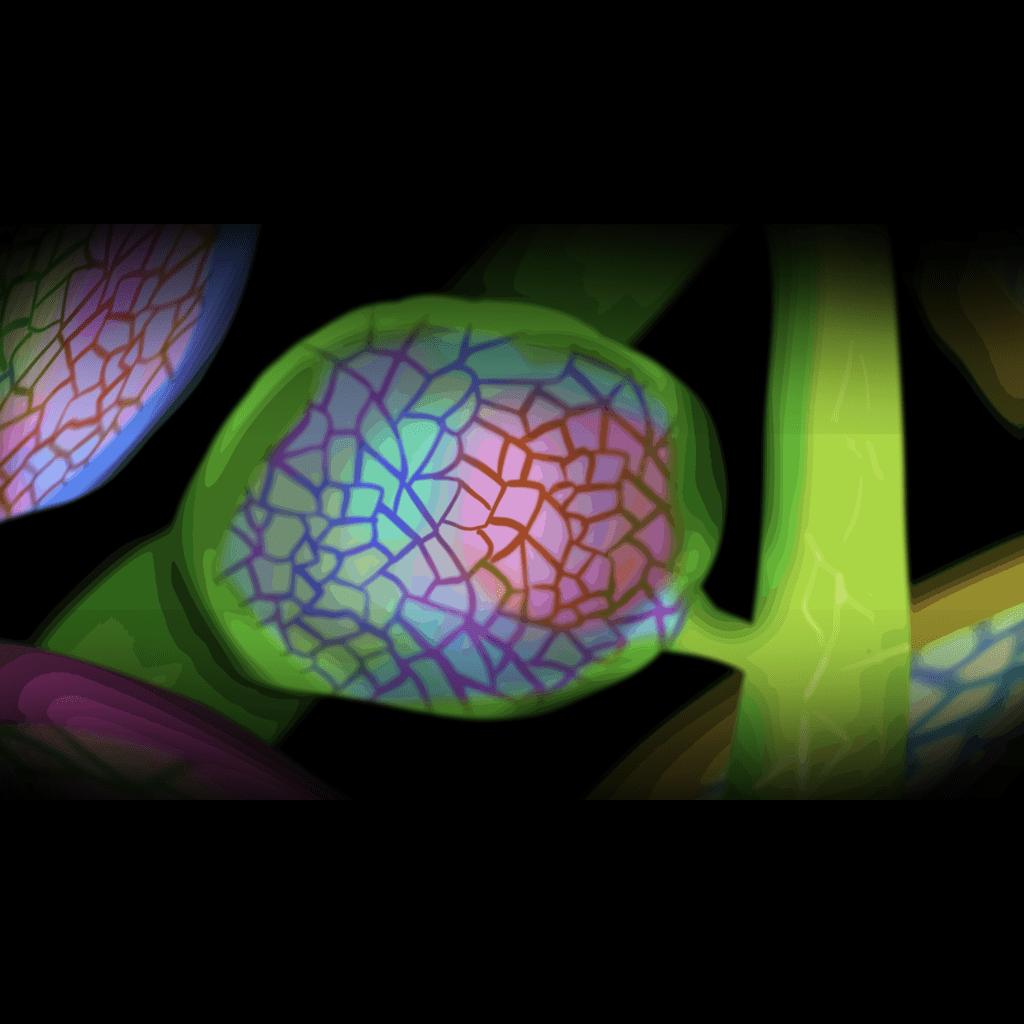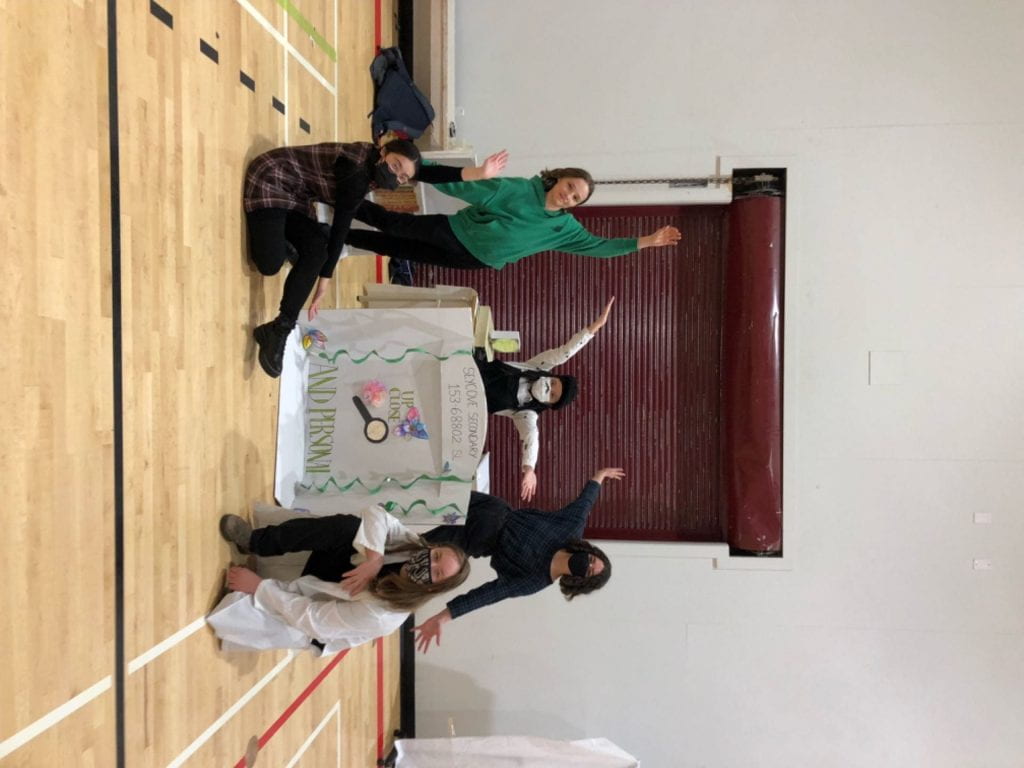Destination Imagination (DI) is a global, innovative, STEAM-focused community whose mission is to inspire youth through the creative process. Teams enrolled in DI work together to develop solutions to various STEAM centric challenges. These past few months, various PLP classes have been working towards the completion of their own challenges, which were presented in the DIBC 2022 provincial tournament.
🔍 Up Close And Personal
I participated in the Scientific “Up Close” challenge, with my team members: Ava, Julian, Teva, and Theryn. I honestly enjoyed getting to know my team more– and I feel that the general positive attitude everyone brought to the table helped a lot!
Although our challenge was a science based one, I found that there were various technical and arts aspects as well. As a team, we dubbed ourselves as “Up Close and Personal”, a spin-off of the challenge’s name. You can read more about our challenge here!
When we first began working on our solution together, I hadn’t exactly known what to expect. I personally do not have the best experiences in group projects, mostly because I am admittedly quick to judge and easily frustrated. Due to such, I feel that I had misjudged my DI group last year… so I’m pretty proud of myself for being able to approach this team a little more open-mindedly. It honestly did help that I was already well acquainted with my friends, Ava and Teva.
Everyone was able to bring amazing ideas to the table, particularly through our Idea Generation charts. Creativity and brainstorming was rampant, and it actually ended up taking us awhile to crack down on the ideas we wanted to utilize for our solution!
✅ Challenge Solution
- Team Choice Elements
We had two team choice elements: music and animation/art.
Our team mate, Julian, composed an amazing soundtrack for the Microworld aspect of our presentation. The components within the music were strategically chosen; such as the theremins, which were originally used in in the 1990’s horror film industry were chosen to set the underlying spooky and eerie feel in our Microworld. I feel that this team choice element does reflect the interests of our team, seeing as most of us are musicians.
Also, I worked with Ava in order to create different art aspects of our presentation, including the projected art backdrop. I created the classroom setting, meanwhile Ava was able to animate a transition between the classroom and Microworld. During our actual presentation, we nearly had a heart attack, because the projection was not working. Luckily, the problem was that the appraisers had forgotten to plug in the power extension chord they supplied.
- Mysterious Object
The mysterious object in our story is a wooden puzzle mechanism that reveals the message “Growth Mindset” and helps the characters escape the Microworld. This contraption was Theryn’s idea– and I cannot wrap my head around how he managed to troubleshoot it. It ended up being really cool!
This idea of it saying “Growth Mindset” was first pitched during our adventures at Loon Lake, albeit jokingly and not quite seriously. However, we ended up going forward with that idea, seeing as the message within our story was from Julian, who acted as our teacher. (And if PLP has taught me anything, it is that teachers sure do love preaching the words of the holy growth mindsets.)
- Microworld Scenery
Our Microworld is of a plant-based environment, and inspired by the idea of an “ecosphere”. An ecosphere can be described as: “a complete, self-contained and self-sustaining miniature world encased in glass”.
Included within our Microworld scenery, is our bookshelf, table, and miniature plant display. The cardboard bookshelf and table uses various paper creations to depict an artistic rendition of cells within the Microworld. This was definitely the aspect of the challenge solution that gave me the most grief! All the painting, cutting, stapling, and pasting… it nearly drove me insane. Although this was the part of the solution were Ava and I truly got to contribute since we share a love for art, it really excited me to see everyone else in our team contributing to create some art as well. Particularly, I was impressed by Julian, who helped us paint Alfred the Bookshelf’s decorations, despite not having much prior experience painting.
The comparably smaller plant display is not 3D when it is switched to the Microworld version, though the classroom setting has our Microworld itself in its 3D, life-like form. This plant display was actually originally created as a prototype for Alfred the Bookshelf for our first dress rehearsal. It was cool seeing mini-Alfred being incorporated into our solution after all.
- Microscopy Imaging Technique
Our team decided upon using Polarization as our Microscopy Imaging Technique. In regards to our Microworld scenery, Ava and Teva came across various photographs of plants under a microscope using polarization; which we then used as inspiration when designing the scenery. Additionally, we knew that when polarization is used, dye could be added to the specimen in order to enhance certain parts of its structure. Due to such, we decided polarization would allow us the creative freedom to express the microworld in a colourful manner.
- Visual Effect
Our visual effect is the mechanism that ‘breaks’ as well as ‘fixes’ the mysterious object in our story. It enhances the mysterious object by revealing the message “Growth Mindset”, which inspires the characters to escape the Microworld through working as a team. It utilizes a mechanical pulley system to actuate all the components in a synchronized fashion. We used the technical methods woodwork, mechanical engineering, and structural engineering in order to create this pulley system. The effect of the message breaking and fixing effectively enhances the object as well as adds depth and drama to our overall storyline.
🎬 Our Challenge Video!
Here Lies Alfred: February 24, 2022 – April 2, 2022
…Unfortunately, Alfred was later brutally murdered. He lived a fine life.
🌱 Conclusion
All in all, despite the deadlines, stress, and hard work… I’m really proud of the work we put in. It’s not very often that I walk away from a group project feeling good. Having a genuinely cool team honestly helped a lot, since we all pitched in to alleviate the pressure. I feel like our team managed to learn a lot more about each other, and bond more than what usually happens in PLP projects. I also think we managed to have fun and mess around, despite how most PLP learners have learned not to associate the word “DI” with “fun”.
At the end of the day, I’m just glad we did it. It was pure, unadulterated chaos… but it was fun.




























Leave a Reply